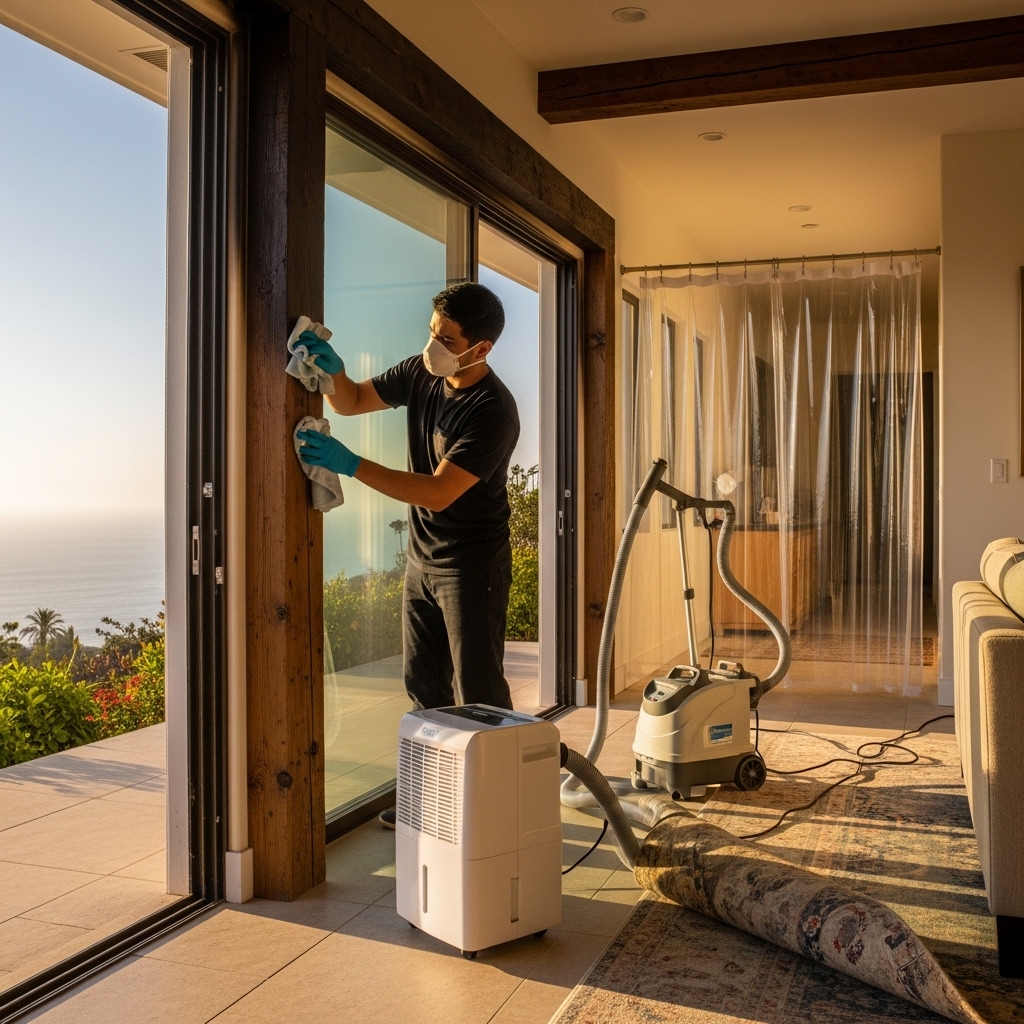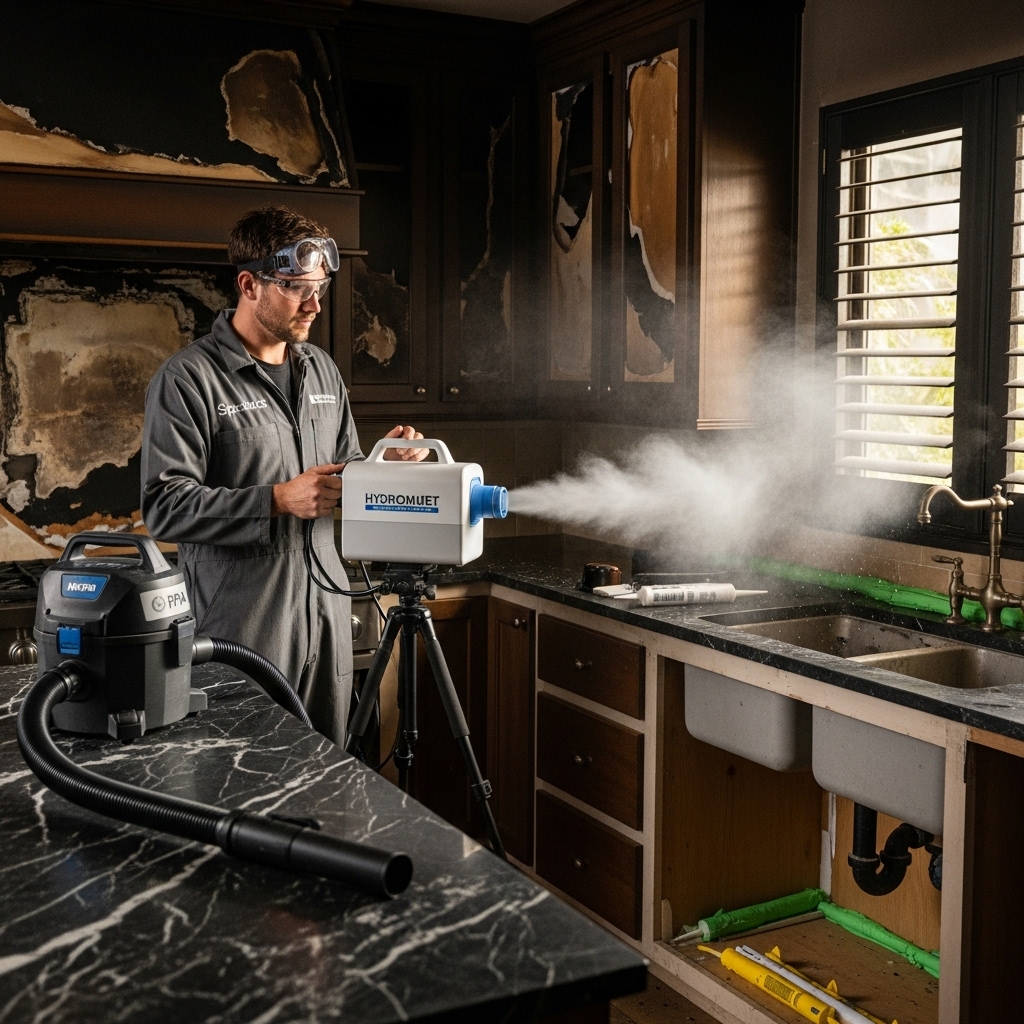Introduction: Compassionate, Thorough Cleanup After a Fire in Canoga Park
When a fire disrupts your home or business in Canoga Park, California, the aftermath can feel overwhelming. Beyond the visible char and soot, there are hidden hazards, lingering odors, and water-related issues that require a specific, methodical approach. Professional cleanup is not just about appearances; it is about safety, health, and restoring a sense of normalcy. If you are beginning to map out your next steps, learning what a comprehensive fire cleanup entails will help you move forward with confidence. Many property owners start by connecting with a trusted fire damage restoration specialist who understands local codes, materials, and the climate considerations unique to the San Fernando Valley.
Cleanup after a fire is a multi-stage process that prioritizes secure entry, hazard control, moisture management, soot and smoke removal, odor neutralization, and careful treatment of contents. Each step must be completed in the right order to avoid cross-contamination and to preserve as much of the structure and belongings as possible. In Canoga Park, where warm, dry winds can carry soot particulates and accelerate secondary damage, fast action and professional containment strategies are especially important.
Why Fire Cleanup Is Different From Ordinary Cleaning
Fire cleanup is not standard housekeeping. Soot can be acidic, smoky residues can be oily or dry, and water from firefighting can drive contaminants deeper into porous materials. Without proper methods and personal protective equipment, you risk embedding stains, spreading odor, and creating long-term indoor air quality issues. A certified team identifies residue types, selects appropriate cleaning agents, and sequences tasks to protect both occupants and the building.
The restoration process also addresses hidden dangers. Electrical systems might have heat-damaged insulation. Structural members can be weakened by fire or water. HVAC systems can harbor soot, distributing contaminants throughout the property if run prematurely. Cleanup specialists perform systematic inspections, establish safe work zones, and coordinate with licensed trades to ensure the environment is secure before detailed cleaning begins.
First Priorities: Safety, Stabilization, and Documentation
After first responders clear the site, the focus shifts to stabilizing the structure and reducing secondary damage. Common early actions include:
- Board-up and temporary weatherproofing to secure openings and prevent intrusion.
- Utility shutoffs and safety checks for electric, gas, and water.
- Initial water extraction and moisture control to prevent mold growth and material swelling.
- Establishing negative air pressure and HEPA air filtration to reduce airborne particulates.
- Thorough photo and video documentation to support insurance claims and scoping.
These critical tasks help contain the damage so that detailed cleanup can proceed efficiently and safely. In Canoga Park, where daily temperature swings and seasonal winds can complicate conditions, rapid stabilization can make a noticeable difference in outcomes.
Understanding Soot and Smoke Residues
Not all soot is the same. Dry soot from fast, high-heat fires behaves differently than wet or greasy soot from slower, smoldering fires. Protein residues from kitchen fires are thin and stubborn, often invisible yet intensely odorous. Effective cleanup begins with identifying residue types, then matching them with the right chemistry and technique. Using the wrong approach—for example, wet washing a surface with oily soot—can smear contaminants and set stains deeper into the substrate.
Technicians typically test-clean in discreet areas to confirm the optimal method. They may use dry sponges on painted walls for initial lifts, alkaline detergents for heavy carbon, or specialized solvents for protein films. Porous materials such as unfinished wood, acoustic tiles, or textiles often require deeper deodorization strategies to fully neutralize trapped odor molecules.
Water and Moisture Management After Firefighting
Fire suppression saves property, but the resulting water can foster mold growth and structural deterioration. Professional cleanup includes rapid extraction, strategic demolition of unsalvageable wet materials, and calibrated drying with dehumidifiers and air movers. Moisture meters and thermal imaging identify hidden dampness behind walls, under flooring, or inside cavities where microbial activity could take hold. Addressing moisture early also accelerates odor control, since many persistent smells are linked to damp, contaminated materials.
Detailed Cleaning: From Top-Down Strategies to Targeted Treatments
Cleaning proceeds in an organized, top-down fashion to avoid re-contaminating areas that have already been addressed. Typical tasks may include:
- HEPA vacuuming ceilings, beams, and overhead fixtures.
- Dry sponge passes on painted or sealed surfaces to lift loose soot.
- Wet washing with selected detergents, working in sections and changing rinse water frequently.
- Spot-treating stubborn deposits with appropriate solvents.
- Cleaning windows, tracks, and screens to remove oily film and restore clarity.
For structural wood that absorbed odor or smoke, technicians might perform abrasion cleaning or apply sealers that lock in residual odors. The goal is to remove as much contamination as possible before considering encapsulation.
Odor Neutralization That Lasts
Persistent smoke odor can be a major emotional and health stressor. True deodorization targets odor sources, not just the air. Professionals combine thorough source removal with advanced methods such as thermal fogging, hydroxyl or ozone treatment (used appropriately), and sealed-zone air scrubbing. Textile deodorization may involve laundering with odor-counteractant detergents, hot-water extraction for carpets, or specialty cleaning for drapes and upholstery. Proper ventilation and humidity control further support odor reduction and help prevent reappearance.
Contents Cleaning, Pack-Outs, and Salvage Decisions
Belongings often carry significant sentimental and functional value. A good cleanup plan sorts items into categories: clean on-site, pack-out for specialty cleaning, or discard. Electronics require careful evaluation because soot and moisture can corrode internal components. Paper documents and photographs may be stabilized through drying and then cleaned using gentle methods. In some cases, contents are transported to a secure facility for ultrasonic cleaning, deodorization, and climate-controlled storage until the structure is ready for their return.
Local Expertise Matters in Canoga Park
Canoga Park’s building styles range from mid-century homes to newer mixed-use spaces, each with distinct materials and assemblies. Local pros understand regional construction methods, common roofing systems, and the interplay between hot, dry summers and indoor environments. They are familiar with municipal requirements and coordinate with adjusters and inspectors to streamline the process. In addition, they know how seasonal Santa Ana winds can redistribute soot and emphasize sealing and containment as early steps in the plan.
Choosing a Qualified Cleanup Partner
Selecting the right team helps ensure a smooth, safe restoration. Look for certifications in fire and smoke restoration, water damage, and microbial remediation. Ask about their process for protecting unaffected areas, their air quality controls, and their documentation practices. A provider that communicates clearly, sets expectations, and offers a scope tailored to your property will likely deliver better results. During initial consultations, discuss your priorities, timelines, and any sensitive items that need special care. Partway through a project, many owners appreciate an update that includes progress photos and a revised scope if new conditions are discovered.
How Long Does Fire Cleanup Take?
Timeframes vary widely based on the size of the property, the intensity of the fire, water usage, residue types, and material finishes. A small contained incident may take days, while a broad loss may require weeks of phased work. Cleanup is typically integrated with repairs; for example, removing damaged drywall and cabinets allows easier access for cleaning framing members and addressing odor sources. The earlier cleanup begins, the faster the overall timeline tends to be, because secondary damage is reduced and fewer materials require replacement.
Insurance Coordination and Documentation
Thorough documentation supports your claim and helps align expectations. Professionals typically provide detailed notes, moisture maps, material inventories, and before-and-after imagery. They may also coordinate with adjusters for joint walk-throughs to agree on the scope of work, salvageability determinations, and any code-related upgrades. Clear documentation also benefits you later, providing a record of the steps taken to restore cleanliness, safety, and habitability.
Preventing Cross-Contamination During Cleanup
Containment is a hallmark of quality fire cleanup. Crews often establish polyethylene barriers, zipper doors, and negative pressure zones to keep soot from migrating into clean areas. They protect flooring with tacky mats, bag and label debris promptly, and clean tools frequently. HVAC systems are off during active cleaning to avoid re-distribution, and registers are sealed until ducts can be evaluated and cleaned. Mid-project air quality checks can confirm progress and validate that the environment is trending safer for occupants and workers.
As you navigate choices, remember that cleanup is the foundation of any successful rebuild. Effective decontamination sets the stage for durable, odor-free repairs and helps preserve your investment. Many Canoga Park property owners rely on experienced fire damage restoration teams to manage this critical phase and reduce disruption to daily life.
What You Can Do Before the Cleanup Crew Arrives
While it is best to leave most tasks to professionals, there are safe steps you can take:
- Limit movement inside the property to avoid tracking soot.
- Place clean towels or sheets over high-traffic pathways.
- Do not attempt to wash painted walls or upholstery; incorrect methods can set stains.
- Avoid using the HVAC system until it is inspected.
- Identify priority items you want evaluated quickly (medications, critical documents, essential electronics).
These simple measures can improve outcomes and give your cleanup team a head start when they arrive.
Frequently Asked Questions
Q: When should cleanup start after a fire in Canoga Park?
A: As soon as the property is cleared for entry and it is safe to proceed. Rapid response limits secondary damage from soot, water, and humidity fluctuations common in the Valley.
Q: Is it safe for my family or staff to stay during cleanup?
A: That depends on the extent of damage and the containment measures in place. Many projects require partial or full temporary relocation to maintain safety and indoor air quality.
Q: Can smoke odor be eliminated completely?
A: In most cases, yes. Successful odor removal combines source removal, deep cleaning, and professional deodorization methods targeted to the property’s materials and residue types.
Q: What happens to items that cannot be cleaned?
A: Unsalvageable items are documented and disposed of according to guidelines. Salvageable items are cleaned on-site or packed out for specialized treatment.
Q: Will my HVAC system need cleaning?
A: Typically, yes. HVAC systems can harbor soot and distribute odors. Inspections help determine whether duct cleaning, filter replacement, and coil cleaning are needed.
Q: How long will the cleanup phase take?
A: Duration varies by size and severity. Your restoration team will provide an estimated timeline after initial assessment and adjust it as needed based on findings.
Q: What should I do about important documents and photos?
A: Isolate them from dampness and soot exposure, then inform your restoration team. Many items can be stabilized and cleaned with gentle techniques.
Ready to Restore Your Property in Canoga Park?
If you need a dependable partner to manage fire cleanup, containment, and deodorization, choose a local team that understands the unique needs of Canoga Park properties. From safety-focused stabilization to meticulous final cleaning, the right professionals will guide you through every step and coordinate smoothly with repairs and claims. Take the first step toward a cleaner, safer space by contacting experts in fire damage restoration who can respond quickly and compassionately.


